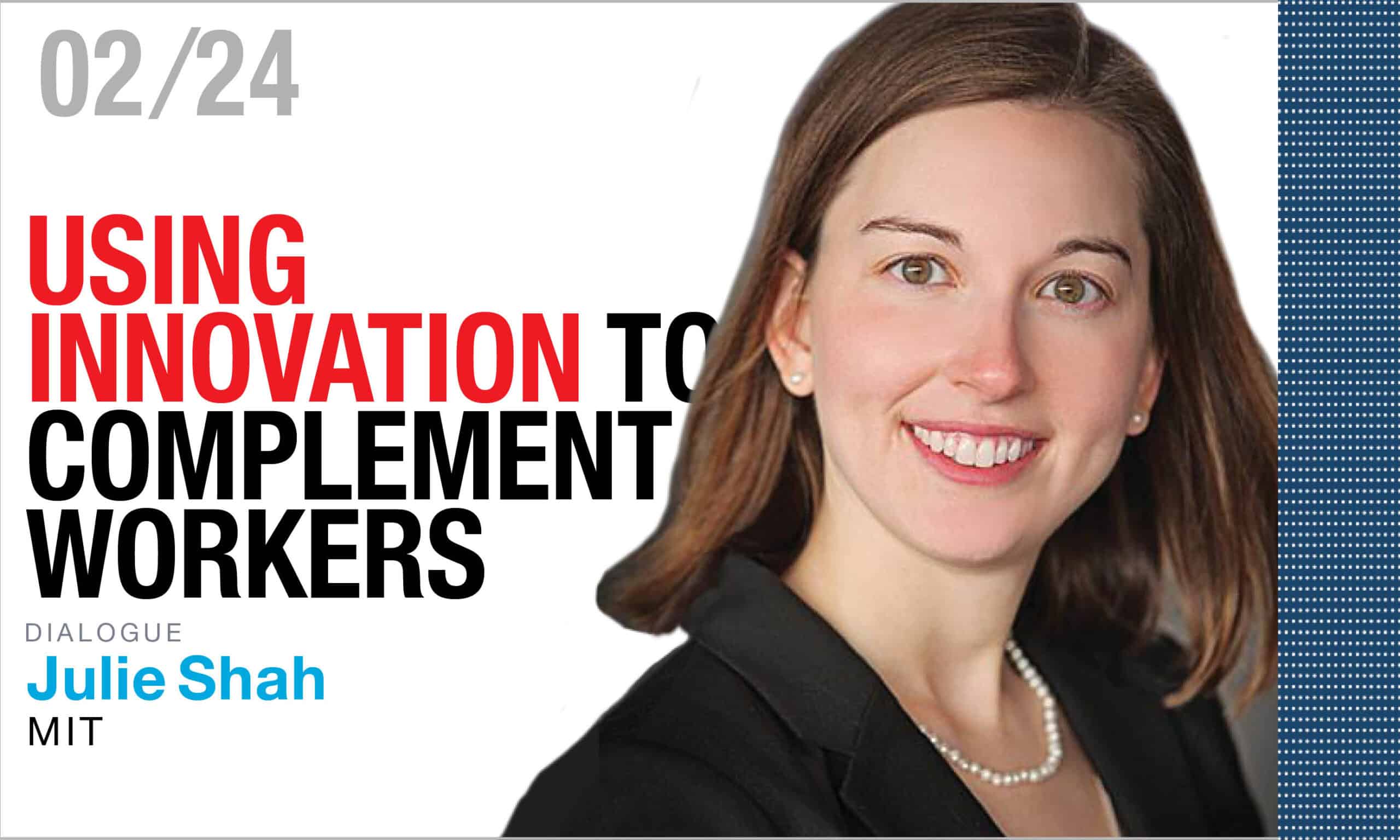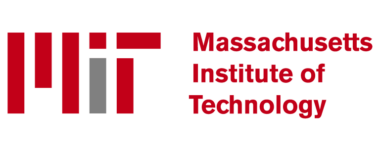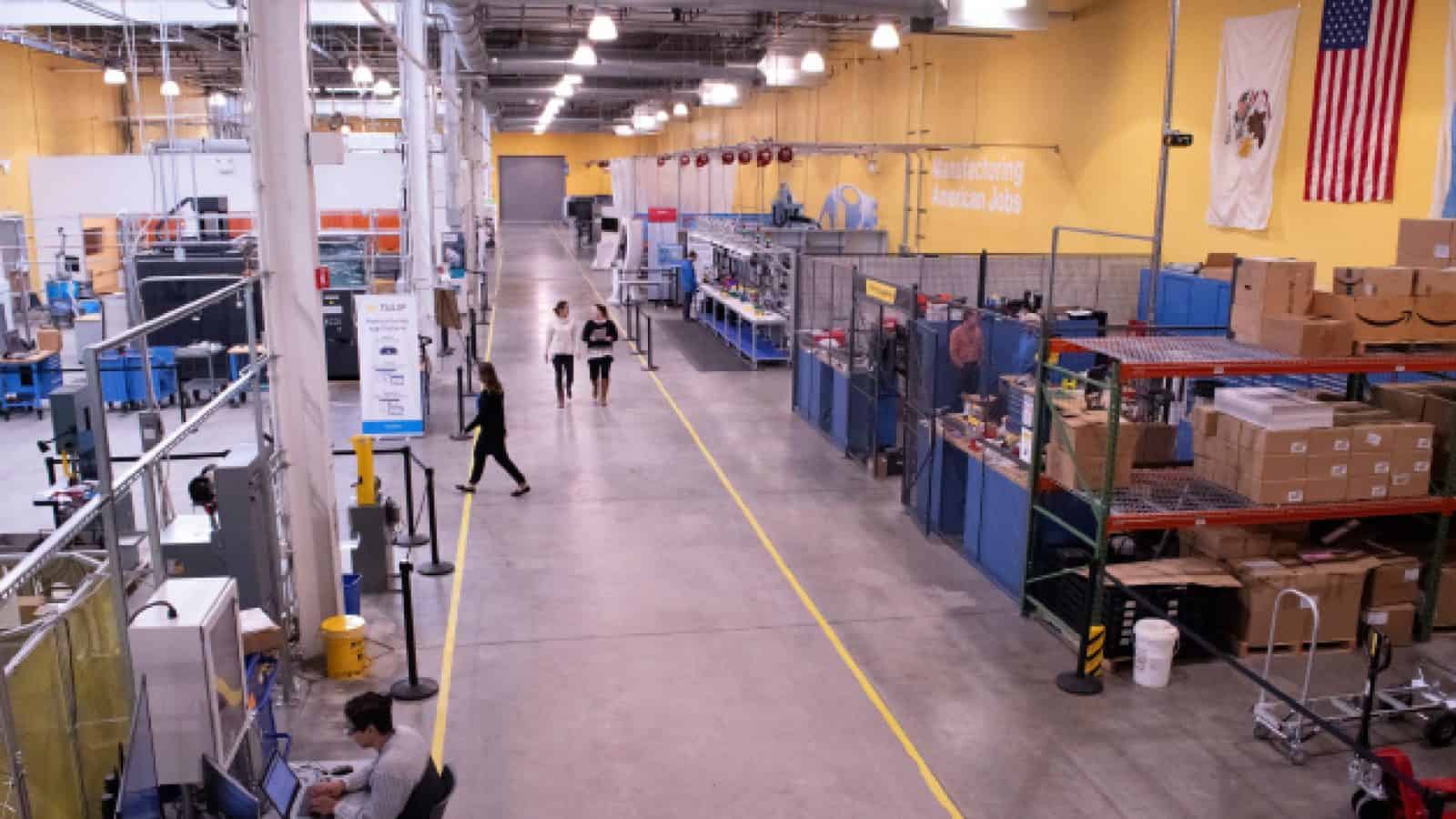Dialogue: Using Innovation to Complement Workers

MIT is partnering with Amazon to develop best practices for introducing new technologies alongside quality jobs.

Dr. Julie Shah of the Massachusetts Institute of Technology joined the MLC’s Board of Governors in 2022. Since then, she has participated in MLC’s Rethink and Manufacturing in 2030 events, speaking about the use of AI in manufacturing and its implications for the manufacturing workforce. In October of last year, MIT announced a partnership with Amazon to research how best to use innovative technologies such as AI and robotics to complement rather than replace workers. The Manufacturing Leadership Journal recently sat down with Dr. Shah to discuss her work and the objectives of the partnership with Amazon.
Q: Could you describe your role at MIT and your areas of concentration from a research and teaching perspective?
A: I’m the H.N. Slater Professor in MIT’s Aeronautics and Astronautics department. I also co-lead MIT’s Work of the Future initiative, directing cross-disciplinary research on how innovation impacts jobs. My own AI and robotics lab aims to imagine the future of work by designing collaborative AI teammates that enhance human capability. I partner with companies to translate these ideas into real-world industries — manufacturing, healthcare, transportation, aerospace, and more. At MIT, I teach classes focused on human-centered design of AI, robotics, and autonomous systems. And through cross-campus initiatives like the Work of the Future, we’re engaging policymakers, academics, and industry leaders to shape a more positive future enabled by technology.
Q: You were one of the key people involved with MIT’s Work of the Future initiative, a report on which was published in 2020. Could you summarize some of the key findings of that report?
A: MIT’s former president, Rafael Reif, convened a three-year task force back in 2018 during a time of high anxiety about automation and its potential to displace jobs. Some forecasts predicted that up to half of all jobs were vulnerable. The task force took an interdisciplinary approach to evaluating those claims. What we found was a much more nuanced story — new technologies did not appear to be eliminating jobs outright, but technological progress was also not contributing to widely shared prosperity.

“We want to grow a community that advances automation responsibly and inclusively.”
For example, our researchers found that robots are often inaccessible for small and medium enterprises, which employ nearly half the US manufacturing workforce. This leads to unequal productivity distribution, with large firms able to achieve much higher productivity than smaller ones.
The main takeaway, and the vision for building on the task force’s work, is that we should strive to align innovation with good outcomes for all workers.
Q: Very interesting. Pivoting topics a bit, last fall, MIT and Amazon announced a partnership to fund research into best practices for introducing new technologies alongside quality jobs. What are the goals there and how do you see that effort building on the Work of the Future report?
A: The vision is to shape a future where innovation complements rather than displaces workers. We also want to grow a community advancing automation responsibly and inclusively.
To study this, we recently launched an “Automation Clinic” at MIT where students team up with companies to see firsthand how tech impacts jobs. Over two years we’ve worked with 20+ firms in sizes ranging from 20 to 1,000+ employees. We’re making short docuseries showing real use cases.
Going forward, we’ll expand these learnings through new partnerships across the country. We already have interest from Ohio, Indiana, and Oklahoma. The idea is getting more schools, students, and employers exchanging ideas for “positive-sum” automation that drives productivity but also employee flexibility. Our Amazon collaboration specifically supports grad students to embed directly to study the introduction of new technologies in small and medium firms.

“Our Amazon collaboration specifically supports the study of new technologies in small and medium firms.”
Q: Is there a timeline yet for publications or outcomes from that effort?
A: We plan to publish initial findings as a series of case studies in mid 2024. Longer-term, the goal is to translate insights from the research into educational resources and training materials for broader distribution, both to industry practitioners as well as for engineering education.
Q: Great, look forward to seeing those results. Finally, I understand you also have a working group focused specifically on generative AI. Can you discuss the goals and composition of that effort?
A: MIT’s Work of the Future initiative has convened a cross-disciplinary group of industry and academic leaders to study how the design and use of generative AI tools can enable higher-quality jobs and more inclusive access to the latest technologies.
On the research side, our scholars are already conducting studies analyzing real-world deployment of generative AI systems and their impacts on employees. We’ll be publishing those as academic papers as well as case studies of best practices.
The working group itself just kicked off and meets quarterly to share knowledge and identify guidelines. We’ll also host annual summits for broader discussion among corporate AI leaders. M

FACT FILE: Massachusetts Institute of Technology
Headquarters: Cambridge, MA
Employees: 16, 327
Founded: 1861
EXECUTIVE PROFILE: Dr. Julie Shah
Title: H.N. Slater Professor of Aeronautics and Astronautics at MIT. Leads the Interactive Robotics Group of the Computer Science and Artificial Intelligence Laboratory.
Education: Ph.D from MIT in 2011.
Previous Roles:
– Boeing Research and Technology
About the author:

David R. Brousell is Co-Founder, Vice President, and Executive Director at the NAM’s Manufacturing Leadership Council.
